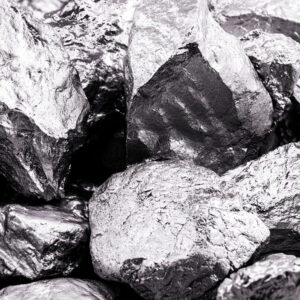As demand for electric vehicles and the rare earth elements (REE) required to power them increases, North America is looking for ways to reduce its dependence on China and onshore supply chains. But can we break our reliance on Chinese REE and become independent from China?
China controls 90 percent of the REE production market. But its supply chain dominance doesn’t come simply from the physical mining of these elements; instead, nearly all the REE mined is sent to China for refining and processing. As a result, China’s monopoly on REE production has created a supply chain dominance, from refining and metal making to advanced materials and technologies, making it difficult for other countries to compete on an impactful level.
One of North America’s most significant challenges is creating infrastructure that allows us to mine, extract and refine our REEs, decreasing our dependence on China.
How close are we to being able to onshore our REE production? From Texas to the Canadian Arctic, North American mining companies have been doubling down to source critical REEs and build infrastructure to process them. For example, MP Materials, which owns the REE Mountain Pass Mine, has created a self-contained system — with co-located mining, milling, separations and finishing — and is considered to be one of the highest quality rare earth deposits in the world with an average grade greater than 8 percent. Although Mountain Pass has the only active mine and processing plant in North America, many other junior rare earth mining companies are stepping in to help address REE demand, like American Rare Earths, Rare Element Resources, Commerce Resources, Energy Fuels, and our team at Defense Metals, among others.
Thankfully, Western governments have shown interest in supporting the development of the critical materials sector. As part of President Biden’s Investing in America agenda, the Department of Energy announced $16 million in support in September 2021 to help bring critical mineral supply chains to America and reduce reliance on China, and millions have been made available via the Defense Production Act and the departments of Energy and Defense. Biden is also interested in potentially funding critical mining projects abroad in places like the United Kingdom and Australia to shift dependency away from China.
In Canada, the government announced $3.8 billion in funding over eight years for the critical minerals sector. Most Canadian provinces have critical metals strategies. In 2022, Minister Dan Vandal announced $7.5 million in funding to support Canada’s first REE processing facilities in Saskatchewan.
U.S. Secretary of Energy Jennifer Granholm eloquently summarizes the goal of this funding in North America, to “reduce our overreliance on adversarial nations and position (ourselves) as a global manufacturing leader — while supporting communities that have helped power our nation for generations.”
Some of the drivers for REE besides EVs are technologies like wind turbines, smartphones, and aerospace and defense equipment. Regarding price dynamics, REE prices have recently softened, but prices will likely rise and stay strong over the coming years as demand increases faster than supply. But are these prices controlled by Chinese producers? Well, until we solidify our onshore production and quell supply chain demands, the answer is likely “yes.”
However, the Ministry of Industry and Information Technology has previously instructed Chinese producers to regulate their operations to prevent any market speculation and keep prices reasonable.
Ultimately, shifting our dependence away from China will require further mining and processing infrastructure built throughout North America. And even though budgets have been allocated, mine permitting timelines need to be improved, and more government funding must be directed toward the mining sector and downstream industries to keep things moving forward and address the growing REE demands in North America.


